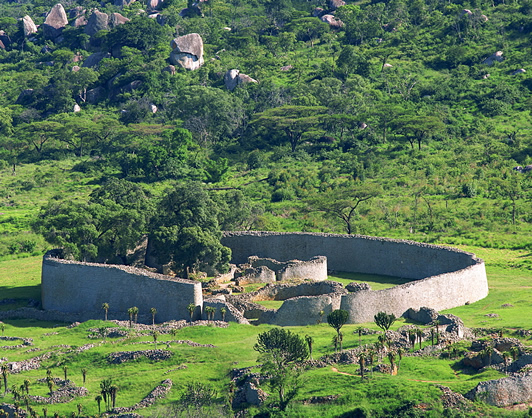 |
| African City-states |
The emergence of African city-states began in North Africa with ancient Egypt and then later the formation of the Carthaginian empire. These civilizations are both heavily documented by written accounts, as are the other North African kingdoms of Numidia and Mauretania.
However, apart from surviving second- hand accounts from early travelers from Egypt or Carthage, knowledge of city-states in the rest of Africa relies entirely on archaeological evidence. Carthage ruled the area around its capital through direct rule, and the remainder of its areas through client kings such as those of Numidia.
The Numidians throwing their support behind the Romans at the Battle of Zama in 202 b.c.e. saw the defeat of the Carthaginians, setting the scene for the destruction of Carthage itself in 146 b.c.e. Numidia had a brief period of independence before it too fell under Roman control.
The most well-known African city-states outside North Africa are thought to have emerged in modern-day Sudan and Ethiopia, with many settlements near the confluence of the Blue and White Niles, and ancient megaliths were found in southern Ethiopia.
Gradually two city-states, those of Meroë (900 b.c.e.–400 c.e.) and Axum (100–1000 c.e.), emerged, both transformed from powerful cities to significant kingdoms controlling large tracts of land, relying heavily on the early use of iron.
The use of bronze and iron in war are also clearly shown by the location of some of these settlements. The remains of many ancient villages and small townships have been found in Sudan, which show that protection from attack was considerably more important than access to fertile arable land.
The other area that seems to have seen the emergence of city-states in the ancient period was in sub-Saharan West Africa. The finding of large numbers of objects and artifacts at Nok in modern-day Nigeria, which flourished from 500 b.c.e., has demonstrated the existence of a wealthy trading city on the Jos Plateau.
It seems likely that there would have been other settlements and small city-states in the region, with people from that area believed to have started migrating along the western coast of modern-day Gabon, Congo, and Angola, and also inland to Lake Victoria.
The major African city-state emerging toward the end of this period was Great Zimbabwe. Its stone buildings, undoubtedly replacing earlier wooden ones, provide evidence of what the society in the area had developed into by the 11th century c.e.
